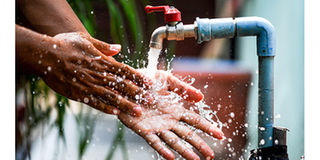Highlights of Kenya’s water sector performance in 2023-2024
Sponsored by Water Services Regulatory Board

Every year, Kenya’s Water Services Regulatory Board (WASREB) releases a report detailing the performance of the country’s water and sanitation services sector in relation to parameters that largely define availability and access.
Titled Impact, the report is WASREB’s main tool for public reporting, and goes ahead to assess and rank water services providers as per various performance dynamics. This aspect is aimed at inspiring healthy competition and improving service delivery.
The 17th edition of Impact is out, covering the 2023-2024 period. It tells a story of progress, persistence and the urgent need for regulatory compliance as a foundation for inclusive development.
Released against the backdrop of the new Water Services Regulations 2025, the report serves not only as a performance scorecard but as a tool for strengthening accountability, transparency, and equity in water service delivery across the country.
More Kenyans connected, but challenges remain
Impact 17 shows that in the regulated utilities, piped water coverage improved from 65 percent to 70 percent, reflecting ongoing expansion efforts. Active water connections rose to 1.85 million from 1.81 million, serving 21.5 million people, an 18 percent increase from the previous period.
Yet this progress comes with caveats. Per capita daily water consumption declined, from 28 to 26 litres, and average hours of supply stagnated at 17 hours per day.
While medium and small utilities showed improvements, the largest utilities, often serving the most densely populated urban centres, continued to drag down national averages, particularly in drinking water quality, which settled at 89 percent.
Money lost in the pipes
Perhaps the most sobering figure in the 2023/24 Impact report is the sector’s Non-Revenue Water (NRW) – water that’s produced but never billed, lost through leaks, theft, or inaccurate metering. NRW rose from 43 percent to 45 percent, translating into a staggering Ksh11.9 billion in lost revenue.
Nonetheless, there are signs of financial resilience. Revenue collection efficiency improved to 95 percent, while cost coverage or how much utilities earn versus what they spend, rose from 95 percent to 98 percent, marking a reversal of a three-year downward trend.
On the sanitation front, the picture is a mixed bag of progress and setbacks. While overall access remained at 92 percent, sewered sanitation coverage dropped from 16 percent to 15 percent, even as the number of people served grew by 7 percent. The average number of people per sewer connection rose from 11 to 12, a sign of increasing strain on existing infrastructure.
The Impact 17 report also notes that metering levels held steady at 97 percent, suggesting that most water produced is at least accounted for in theory, even if not always collected in practice.
WASREB's central message in the report is that compliance to water services regulations is not optional but a necessary duty to bring about improvements in the sector.
Enforcement, transparency, and institutional accountability must go hand in hand with investment if Kenya is to achieve universal access to water and sanitation in line with the Sustainable Development Goals.
In that spirit, the board is strengthening partnerships with county governments, development partners and consumers, to ensure that water governance and financing mechanisms are both robust and equitable.
While the 2023/24 Impact report highlights noteworthy gains – particularly in coverage and financial viability – it also exposes longstanding vulnerabilities in infrastructure, reliability, and sanitation. With climate change, urbanisation, and population growth putting added pressure on water systems, the sector cannot afford to stall.
Kenya can only attain universal and equitable access to water and sanitation for all residents through shared responsibility. That responsibility lies not just with water utilities, but with policy makers, funders and the communities they serve. The stakes are high, but so is the potential for progress.
A copy of the Impact 17 report is available here.
____________________